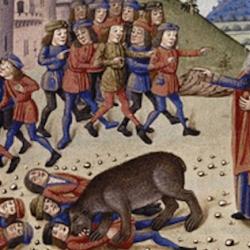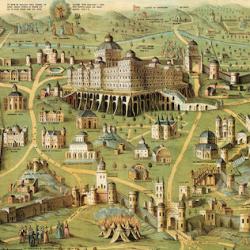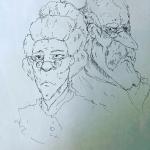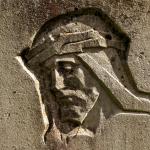INTRODUCTION
As a nation, Israel is in trouble. In the war against Moab, Yahweh turned away against Israel and allowed Mesha to escape Israel’s lordship. Far from the palace and the army camp, however, Yahweh is still at work. Behind closed doors, He works through Elisha to save a remnant of Israel.
THE TEXT
“A certain woman of the wives of the sons of the prophets cried out to Elisha, saying, ‘Your servant my husband is dead, and you know that your servant feared the LORD. And the creditor is coming to take my two sons to be his slaves.’ So Elisha said to her, ‘What shall I do for you? Tell me, what do you have in the house?’ . . . .” (1 Kings 4:1-44).
ELIJAH AND ELISHA
In a number of ways, Elisha’s ministry is a continuation of Elijah’s. Like his master, he helps a widow in desperate circumstances (2 Kings 4:1-7; 1 Kings 17:8-16). Like his master, Elisha raises a child from the dead (2 Kings 4:29-37; cf. 1 Kings 17:17-24). There are also some echoes of the incident on Mount Carmel (compare 1 Kings 18:26, 29 with 2 Kings 4:31; 1 Kings 18:42 with 2 Kings 4:34-35). In 2 Kings 5, Elisha assists a Gentile, as Elijah assisted the widow of Zarephath.
But Elisha’s ministry is not simply a repetition of Elijah’s. There is also a progression. Elijah is the lone Moses confronting the Pharaoh-like Ahab, without even an Aaron to assist him. What Elijah does singly, Elisha does in a community. Elijah’s ministry focuses on calling Ahab to repentance. But the fate of Ahab’s house is now sealed (1 Kings 21:17-24), and Elisha instead concentrates on building an alternative Israel within Israel. Elijah conducted much of his ministry through dramatic public confrontations with Ahab and Baal; Elisha’s ministry is conducted behind closed doors.
TWO WOMEN
Though the story of the widow (2 Kings 4:1-8) is distinct from the story of the great woman of Shunem (2 Kings 4:9-37), the two stores are parallel. Though the Shunammite woman has a husband, he is behind the scenes much of the time. In both stories, Elisha functions as “father” and “husband,” representing Yahweh, the husband of Israel. Elisha plays the role of “kinsman-redeemer,” the close relative who delivers from debt and provides heirs for a dead brother (Leviticus 25:23ff.; Deuteronomy 25:5ff.). In both stories, the lives of children are threatened, and in both cases miracles occur privately (vv. 5, 33).
The indebted widow has no recourse but to sell her sons into slavery, a legitimate way of paying off debt in Israel (Leviticus 25:39ff.). Her creditors, however, are breaking the spirit of the law, if not the letter. Yahweh is the protector of orphans and widows, and Israel is supposed to follow his lead (Exodus 22:22; Deuteronomy 10:18-19; 27:19). Elisha takes up Yahweh’s part, and provides miraculously for the widow. This is a Passover scene; once the doors are closed (cf. Exodus 12:22), two sons are delivered from slavery.
The story of Elisha and the Shunammite is arranged in a parallel structure. The first section is marked by repetition of the phrase “one day” (vv. 8, 11, 18).
A. Shunammite arranges a place for the man of God, 8-10
B. Elisha calls Shunammite and promises a son, 11-17
C. Son dies, 18-20
The second half is marked by her geographic movements:
A’. Shunammite prepares for her journey to see Elijah, 21-25a (arrival at Carmel)
B’. Shunammite woman confronts Elisha, 25b-30 (departure)
C’. Son raised, 31-37
The Shunammite recognizes that Elisha is “holy” (v. 9), which means that the Holy Spirit is with him. The presence of Yahweh moves around the country with Elisha; like Jesus later, he heads a “counter-temple” movement. That’s why the Shunammite sets up a little “temple” for Elisha: It’s an “upper room,” with a table, a chair and a “menorah” (v. 10), the same furniture as the temple in Jerusalem (table=showbread; chair=ark). This is also why Elisha speaks to the woman through Gehazi (vv. 12-13), and why the Shunammite visits the prophet on Sabbaths and new moons (v. 23). It’s also why sons of the prophets bring their firstfruits to him (4:42).
In return for her kindness (her “trembling,” v. 13), Elisha promises the woman she will have a son despite the age of her husband (vv. 14-15). The doorway setting, the phrase “at this time next year,” and the woman’s protest all remind us of Sarah (Genesis 18). Like Sarah, the woman is unfruitful Israel, who can bear seed only through a miracle. Like Isaac, the boy is raised from the dead. The only thing that he does in the story is die – of a head wound (cf. Genesis 3:15; also Genesis 22), apparently during his first trip outside into the land. The land deals death, and wars against the people (cf. 2 Kings 2:19-22; 4:38-41).
The Shunammite holds the child on her knees until he dies (cf. Ruth 4:16), and then runs to Elisha to express her “bitterness” (Heb. is marah; cf. Ruth 1:20). Elisha sends his servant, but like Jesus’ disciples, Gehazi is unable to perform the necessary miracle, and his lack of success is described in the same terms as the failure of Baal in 1 Kings 18. Elisha does raise the boy, communicating life from his Spirit-filled body to the boy’s body (v. 34), life signified by a sneeze (breath, sound) and open eyes. Though he’s been bruised on the head, he is raised from the dead. Those who honor and cling to Yahweh’s prophet, and seek his help in trouble, will find life.
FOOD IN FAMINE
The last two episodes in the chapter both have to do with food, and these are at the center of this section of Kings. Elisha’s ministry, diverse as it is, is fundamentally a ministry of providing bread to Israel. In the first episode, we see Elisha again carving out a zone of life and health within a cursed land. The sons of the prophets gather from the “vines of the field” (v. 39), but the produce of the land brings death (v. 40). Israel herself is a vine (Psalm 80; Isaiah 5), but now Israel brings only thorns and thistles. Just as Elisha healed the waters of Jericho with salt, so he heals the stew with meal (cf. 2:19-22). Gourds are mentioned elsewhere in the OT only in the descriptions of the temple (1 Kings 6-7). The word for “gourd” is related to the word for “light,” and this fits with the presence of gourds with the “firmament” sea in the temple court (1 Kings 7:24). Gourds of the land represent the heavenly lights, and Israel, the firmament land between Yahweh and the nations, now produces deadly food. Only among the sons of the prophets are there true lights in the firmament of Israel.
In the final episode, Elisha multiplies twenty loaves to feed 100 men (vv. 42-44). While not as spectacular as Jesus’ bread-multiplying miracles, this clearly points ahead to Jesus. The fact that barley is used might suggest a connection with the jealousy test of Numbers 5. Those who eat from this table and remain healthy are vindicated as faithful brides of Yahweh.














